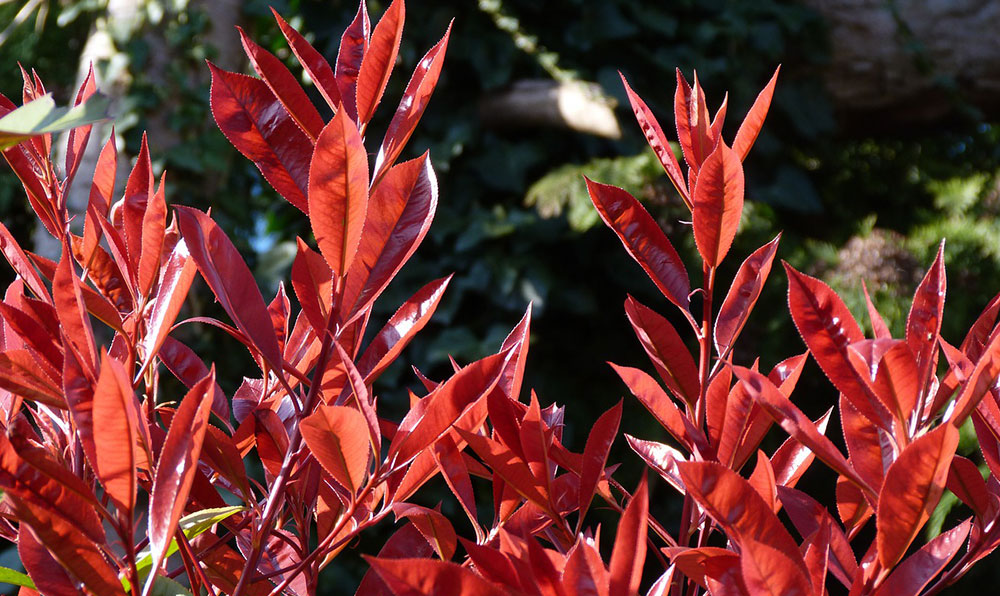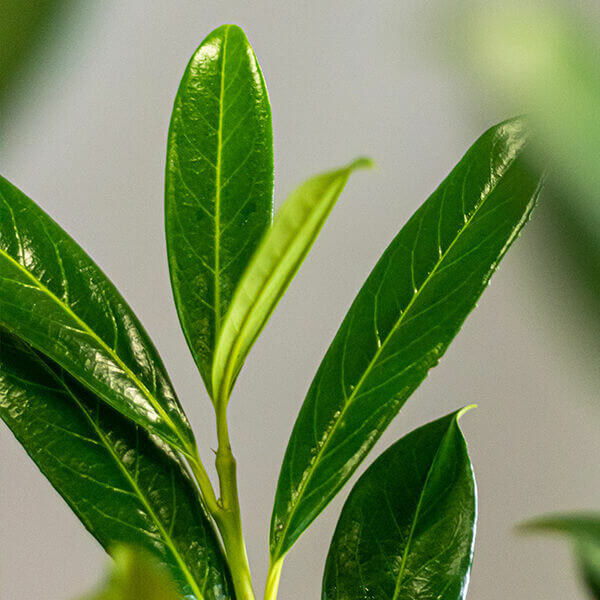Hedge Plants For Formal Landscaping
Hedge Plants For Formal Landscaping
Blog Article
Best Hedging Plants For Cool Climates
Improve your garden's allure with lush hedge ranges such as Yew (Taxus), Thuja, Laurel, Photinia, and Bamboo, celebrated for their structural stability and environmental advantages.
Yew and Thuja provide evergreen protection and winter season durability, while Laurel offers fast development and broad, fragrant leaves.
Photinia adds seasonal beauty with its lively red foliage, and Bamboo lends a low-maintenance, peaceful atmosphere.
These hedges improve air quality, reduce noise, and develop tranquil, personal spaces.
Appropriate planting, spacing, and upkeep ensure vigorous growth and ecological harmony.
Check out how these lush varieties can elevate your garden's appeal and well-being.
Key Takeaways
Transform Your Garden With Lush Hedge Ranges
- Select Yew for its dense, evergreen development and exceptional longevity.
- Go with Laurel for its fast growth and broad leaves, ensuring quick privacy.
- Pick Photinia for its vibrant seasonal foliage, which turns a striking dark red.
- Utilize Bamboo for a low-maintenance, winter-hardy hedge with visual appeal.
- Area plants 2-3 per meter and prune regularly for ideal growth and health.
Popular Hedge Plants
When changing a garden with rich hedge ranges, it's vital to consider popular hedge plants such as Yew, Thuja, Laurel, and Photinia due to their unique characteristics and benefits.
Yew (Taxus) is highly esteemed for its durability and thick, green development, making it a prime option for withstanding landscapes.
Thuja is noted for its evergreen foliage and robust winter resilience.
Photinia adds seasonal vibrancy with red leaves that darken over time, creating dynamic visual appeal.
Laurel uses quick development and aromatic, broad leaves, suitable for quick privacy.
Furthermore, Bamboo is an outstanding choice for ambiance, offering a low-maintenance, winter-hardy alternative that boosts the garden's aesthetic with its stylish, swaying canes.
These choices deal with a range of horticultural needs and choices.
Advantages of Garden Hedges
Garden hedges use a multitude of advantages, making them an important addition to any landscape. These natural barriers are economical to implement and supply considerable wind security, enhancing air blood circulation and adding to noise decrease. The dense foliage of hedges like Thuja and Beech ensures personal privacy by obstructing visibility, producing a serene and remote environment.
Hedges likewise play an essential function in microclimate policy, supplying a stable environment that fosters plant development and minimizes temperature level fluctuations. Their complex leaf structures filter pollutants, enhancing air quality and adding to a healthier garden environment.
Furthermore, hedges master noise reduction, taking in and deflecting sound waves to lower ambient noise levels. This dual performance of offering both visual and acoustic personal privacy enhances the general serenity and aesthetic appeal of any garden.
Planting and Maintenance Tips
For an effective hedge, precise preparation of the planting area is crucial. Guarantee the soil has correct pH and drainage to support strong root advancement.
Area the plants appropriately for the selected types. Water the hedge frequently during its preliminary development stage, adjusting as needed with seasonal changes.
Execute a organized bug control and disease prevention technique, utilizing natural or chemical treatments when required. Routinely check for aphids, termites, and fungal infections.
Apply mulch to maintain wetness and suppress weeds. Seasonal pruning promotes dense growth and air flow, vital for plant health.
Following these standards will assist you cultivate a lively, well-maintained hedge that enhances the appeal of your garden.
Spacing and Cutting Guidelines
Spacing and Trimming Guidelines
Appropriate spacing and trimming are important for cultivating healthy, aesthetically appealing hedges. Sufficient spacing makes sure each plant gets adequate nutrients, light, and air flow.
Follow these guidelines for ideal hedge maintenance:
- Spacing: Position hedge plants 2-3 plants per meter to encourage robust growth.
- Pruning Techniques: Regular pruning is essential for keeping wanted hedge height and shape. Cut brand-new growth in summertime and cut back older wood during winter season.
- Seasonal Care: Change trimming methods and schedules according to seasonal requirements to ensure plant health.
- Hedge Height: Frequently display and cut to keep the desired hedge height and attain consistent aesthetics.
Sticking to these steps will guarantee your hedge prospers, boosting both the appeal and functionality of your garden.
Selecting the Right Hedge
Choosing the Right Hedge
Picking the proper hedge includes evaluating aspects such as fully grown height, foliage density, and environmental strength. Effective hedge plant selection requires comprehending each species' development qualities and site-specific adaptability.
For instance, Yew (Taxus) provides exceptional longevity and thick development, while Thuja is notable for its winter season resilience. In addition, considering upkeep requirements is essential; fast-growing types like Laurel or Privet demand routine trimming, whereas low-maintenance alternatives like Bamboo or Ivy might be more effective for those seeking minimal upkeep.
Ecological elements such as soil type, light schedule, and moisture conditions must also direct the choice process. This cautious approach guarantees the picked hedges will flourish, supplying both aesthetic and practical advantages to the garden landscape.
Delivery and Planting Advice
To guarantee your hedge plants flourish, they must be provided by specialized couriers and planted quickly upon arrival.
Follow these essential steps for effective planting:
- Soil Preparation: Improve the soil with organic matter to improve drain and nutrient material.
- Planting Depth: Create a trench twice the width and equivalent to the depth of the root ball.
- Watering Strategies: Water completely after planting, keeping the soil regularly damp but not saturated.
- Mulching: Apply a layer of mulch to keep wetness and reduce weeds.
Customer Assistance and Service
Given the important function of prompt help in horticultural pursuits, our consumer support team is offered six days a week through telephone, e-mail, and social networks to use professional guidance and swiftly address any concerns. Their commitment to fast reaction times makes sure consumer fulfillment by resolving queries related to plant health, optimal planting methods, and upkeep schedules.

-------------------
This detailed assistance system, enhanced by a stellar 9.3/ 10 customer rating, highlights our commitment to improving the gardening experience for each customer.
Often Asked Concerns
For How Long Does It Consider Hedge Plants to Develop?
Hedge plants normally need one to 3 years to end up being fully established, with the exact duration differing by types and growing conditions.
Reliable care throughout this important duration is necessary for robust growth. Consistent watering, alert weed control, and proper fertilizer application are essential in promoting strong root advancement.
For instance, fast-growing species like Laurel may establish faster, while slower-growing ranges such as Yew may take longer. Persistent maintenance accelerates the establishment process, leading to thick and healthy hedges.
What Are the Best Hedge Plants for Personal Privacy?
The concern of the finest hedge plants for privacy involves examining evergreen and deciduous choices.
Evergreen hedges like Thuja, Laurel, and Cypress offer year-round coverage, making sure constant privacy.
In contrast, deciduous hedges such as Beech use seasonal privacy, shedding leaves in colder months.
Secret maintenance tips for personal privacy hedges consist of regular cutting, fertilizing in spring, and appropriate spacing-- typically 2 to 3 plants per meter.
In addition, consistent watering and thorough weed removal are crucial for promoting healthy, thick growth.
Can Hedge Plants Bring In Wildlife to My Garden?
Yes, hedge plants can attract wildlife to your garden by supplying important advantages like shelter, food, and nesting sites, thereby improving regional biodiversity. Yew, holly, and laurel are exceptional for attracting birds, while ivy supports a range of insects.
However, it is very important to note that there are some downsides, such as increased maintenance to handle bugs and regular maintenance. Thoroughly selecting and keeping hedge ranges can help stabilize these benefits and downsides, eventually fostering a sustainable and dynamic ecosystem in your garden.
Are There Any Blooming Hedge Plants Available?
Yes, there are flowering hedge plants available that can improve the appeal of your garden.
For instance, Elaeagnus, also referred to as Olive Willow, produces fragrant white flowers in the fall, adding a touch of sophistication.
Photinia, another popular choice, showcases dynamic red leaves that grow into an abundant green, creating a dynamic visual impact throughout the seasons.
To guarantee these plants thrive, it's necessary to practice appropriate pruning strategies and seasonal upkeep, such as cutting new development in the summertime and cutting down in the winter season.
These procedures will help maintain the health and aesthetic appeal of your flowering hedges.
How Do I Prevent Pests in My Hedge Plants?
To prevent pests in hedge plants, employ natural pest control methods and preserve appropriate hedge care. Introduce useful bugs like ladybugs, which take advantage of hazardous insects, to produce a well balanced environment.
Frequently examine your hedges for indications of invasion and without delay remove any afflicted parts to avoid the spread. Make sure the health of your hedges by using balanced fertilizers and offering adequate water.
Utilize mulching to maintain soil wetness and appropriate spacing to decrease plant stress and promote robust growth. These practices jointly help in lessening bug concerns and keeping a healthy hedge.
Conclusion
In essence, picking the best hedge varieties such as Yew, Thuja, and Laurel can transform any garden into a relaxing sanctuary. These plants offer year-round greenery, enhance visual appeal, and deal useful advantages like noise decrease and wind security.
Appropriate planting techniques, precise spacing, consistent watering, and seasonal cutting are crucial for ideal development.
Trusted shipment services and expert consumer support ensure a smooth experience from purchase to planting, making it simpler than ever to raise your outdoor area.
Garden hedges hedge plants offer a plethora of benefits, making them an important addition to any landscape. These natural barriers are economical to implement and offer significant wind security, enhancing air blood circulation and contributing to noise decrease. The dense foliage of hedges like Thuja and Beech guarantees personal privacy by obstructing presence, creating a peaceful and secluded environment.

Pruning Methods: Regular pruning is essential for keeping preferred hedge height and shape. Trim brand-new growth in summer and cut back older wood throughout winter.
Report this page